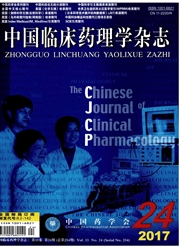

 中文摘要:
中文摘要:
目的研究结核分枝杆菌复合群(MTC)相关挥发性代谢产物(VOCs)标记物用于快速鉴定MTC的应用价值。方法以卡介苗(BCG)为MTC代表菌种,用表面解吸常压化学电离质谱(SDAPCI-MS)对BCG、耻垢分枝杆菌和龟形分枝杆菌培养基上层气体行VOCs检测,同时检测临床常见细菌和真菌的VOCs,以确定MTC相关VOCs标记物及释放时间规律。通过碰撞诱导解离(CID)鉴定特异性谱峰的分子量和分子结构式,并用Matlab对其行主成分分析以判断上述相似菌种VOCs组成成分。结果培养至第9天,肉眼可见菌落之前即可检测到特异性烟酸甲酯(m/z 138)存在于MTC培养基上层气体中,与菌液浓度和培养时间呈正相关,经缓慢增长后在25~30 d时含量迅速增加,而后保持稳定。m/z 140和m/z 152在MTC培养基上层气体中含量也显著高于龟形分枝杆菌(t=9.670,P〈0.01;t=95.610,P〈0.01)和耻垢分枝杆菌(t=9.677,P〈0.01;t=94.802,P〈0.01)。质谱检测所得VOCs指纹图可准确鉴别MTC与2种非结核分枝杆菌,并经主成分分析与其他所测实验菌种可明确区分。结论烟酸甲酯为MTC标记物。SDAPCI-MS通过检测微生物的挥发性代谢产物,能快速、准确地鉴定MTC。
 英文摘要:
英文摘要:
Objective To investigate the application of volatile organic compounds (VOCs) as biomarkers or profiles for rapid detection of Mycobacterium tuberculosis complex (MTC). Methods Bacillus Calmette-Guerin (BCG) was used as the representative of MTC. The upper space of BCG cultures, Mycobacterium smegmatis and Mycobacterium chelonae cultures were detected by surface de- sorption atmospheric pressure chemical ionization-mass spectrometry (SDAPCI-MS) to identify MTC-specific VOCs and the regulation of its release. The clinical isolates of some common bacteria and fungus pathogens were also detected. The identification of the molecular weight and structure of specific spectrum peak was based on the comparison of the collision induced dissociation (CID) on standard substance. Principal components analysis (PCA) was performed by Matlab software to evaluate the differences and similarities of VOCs fingerprints from various genera of bacteria. Results We identified the methyl nicotinate as MTC specific volatile compounds, which was detectable at the 9th day of cultivation before the visual appearance of colonies. Methyl nicotinate showed positive correlations with the bacterium concentration and cultivation times. Its concentration rapidly increased in 25-30 days after slowly rising. The levels of m/z 140 and m/z 152 were significantly higher than those of Mycobacterium chelonae (t = 9. 670, P 〈 0.01 ; t = 95. 610, P 〈 0.01 ) and Mycobacterium smegmatis (t = 9. 677, P 〈 0.01 ; t = 94. 802, P 〈 0.01 ). Visible differences in all the cultures were clearly observed by VOCs-fingerprints. PCA demonstrated significant discrimination between MTC and two NTM strains with species-specific VOCs profiles. Conclusion SDAPCI-MS may be used to detect the microbial VOCs pattern-fingerprints of cultured organisms for rapid identification and classification of MTC. The methyl nicotinate should be used as a marker of MTC.
 同期刊论文项目
同期刊论文项目
 同项目期刊论文
同项目期刊论文
 期刊信息
期刊信息
